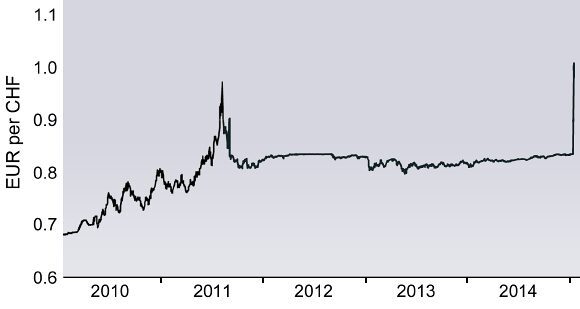The value of a country’s currency is determined by supply and demand in the global foreign exchange market, often known as the forex market. Nevertheless, it has not always been the case since relatively fixed exchange rate arrangements, such as the Bretton Woods system, predominated throughout the majority of the last century following the end of World War II.
Some central banks or monetary authorities see the need for a mechanism outside of the forces of supply and demand to control the value of their currency because fiat currencies often lack backing other than the faith and credit of the issuing government.
A government can gain some degree of control over the relative value of its national currency in the forex market by maintaining a fixed exchange rate or currency peg. A central bank normally periodically intervenes in the forex market to buy or sell their national currency. This is known as a currency peg.
Continue reading to learn more about currency pegs and how they could impact your forex trading.
Defining a Currency Peg
Currency pegging, sometimes referred to as a monetary asset rate, refers to the public policy of a government, monetary authority, or central bank to fix the value of its currency to another currency. A fiat currency, i.e U.S. dollar, or another asset currency, like gold or silver, can serve as the currency to which a national currency is pegged.
In practise, implementing a currency peg usually necessitates that the exchange rate of the pegging currency — meaning the currency being pegged to another currency called the peg currency — be actively managed by a central bank or monetary authority. In the forex market, that authority utilises its reserves to buy or sell the peg currency against the peg currency, which is usually the case.
Tiny or developing nations frequently set up a currency peg with the currency of a country with a stronger and more evolved economy. This practise enables domestic companies to engage in more international markets while bearing considerably less risk from normal exchange rate fluctuations than they would otherwise have to.
How Pegging Currency Works
In practise, a monetary authority that wants to peg its currency may choose a certain exchange rate versus another currency to peg its currency to. A variant on that form of peg would be to instead set a range of acceptable exchange rates for the country’s currency about another currency or basket of currencies.
The monetary authority will inform the public of the fixed exchange rate policy. Then, by engaging in transactions in the open forex market, it will defend the designated pegged rate or range of rates.
Several countries, most notably China in recent years, have managed to maintain a fixed exchange rate by implementing severe capital restrictions and making it illegal to transfer their currency at any rate than the pegged rate.
Countries like China who maintain strict government controls over money conversion transactions have adopted this strategy rather well, although this kind of currency policy can be difficult to implement in practise and even result in black market transactions.
Advantages of a Currency Peg
The main effect of a currency peg country policy for a currency is to reduce volatility in the pegged currency relative to one or more of the country’s trading partners. This national exchange practise helps to reduce the foreign exchange risk faced by domestic businesses engaged in international trade.
A forex peg can help reduce uncertainty, stimulate foreign trade, and increase the economy of a country that implements it due to the forex market’s volatility and risk.
In a historical example, the Chinese economy benefited significantly from its currency peg policy. Pegging the Chinese renminbi to the U.S. dollar also produced a value for the renminbi that was far lower than its purchasing power parity level by an estimated 35%, making life in China appear to be comparatively affordable in comparison to other nations.
Disadvantages of a Currency Peg
A currency peg must have a pretty stable base in reality and strong government backing to be effective in generating the intended consequences. A lack in any of those two sectors might have negative economic effects for all participating nations.
A currency peg also makes it harder for a country to implement a sound monetary policy, especially when its interest rates must match those of the pegged currency. If one country needs economic stimulus while the other has a robust and inflationary economy, this aspect might harm inflation levels. This can also raise inflation since central banks must keep sizable reserves to protect the peg.
The goal of a peg may be defeated if it is set too low or too high, and the expense of maintaining the pegged exchange rate may outweigh the advantages to international trade.
In practise, pegging a currency at an excessively low rate tends to lower domestic living standards, harm foreign trade, and increase international trade disputes. On the other hand, establishing a domestic exchange rate too high tends to encourage domestic overconsumption of imports and can cause significant inflation when the peg eventually breaks.
Is currency pegging good
Pegging a currency decreases the risk of international trade risk for businesses, and doing so at a devalued level can make a country’s goods artificially cheap, increasing its competitiveness in international trade. Yet, it might result in tensions with the governments of other countries since currency pegs frequently lead to trade imbalances.
Why do you peg a currency
To maintain a steady exchange rate against the currencies of one or more trading partners, currencies are pegged. This practise may boost trade in foreign markets and reduce the exchange rate risk brought on by market tourism or the trade in key commodities like oil.
Final Words
A country’s governmental exchange rate with another is fixed by a currency peg, which is a kind of exchange policy. Most countries peg their currencies to stimulate trade, foreign investment, and stability.



